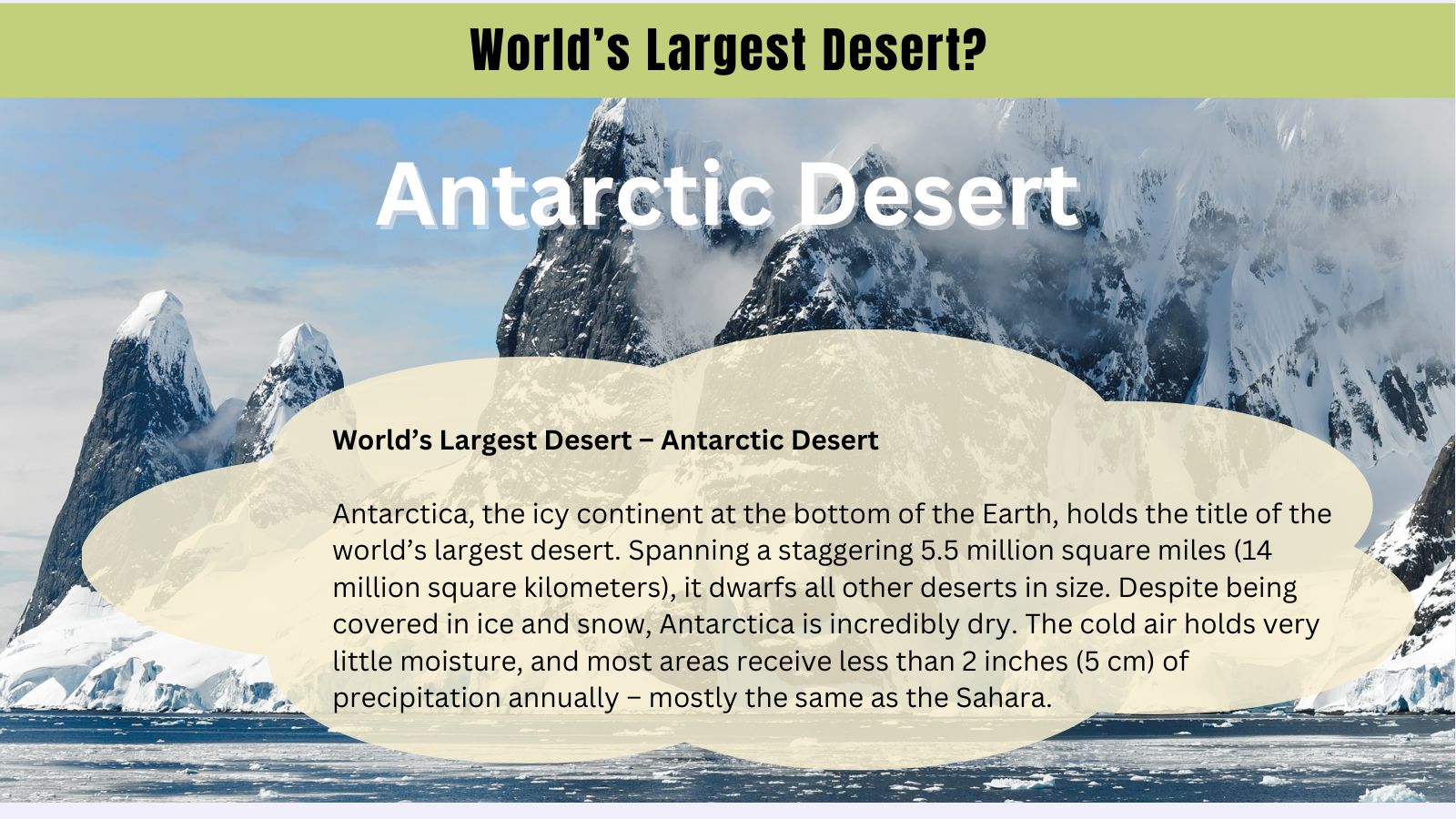What Defines a Desert?
Before going into the details, it’s important to understand what makes a desert a desert. It’s not just about heat and sand the key characteristic of a desert is its lack of precipitation. Deserts are regions that receive less than 250 millimeters (10 inches) of rainfall annually, making them arid and inhospitable to most forms of life.
Where’s the World’s Largest Desert?
Antarctica, the frozen continent at the southernmost point of our planet, qualifies as a desert due to its extreme dryness. Despite being covered by ice that averages 1.6 kilometers (1 mile) thick, the continent receives only about 50 millimeters (2 inches) of precipitation per year, mostly in the form of snow. This makes it the driest and coldest place on Earth.
Spanning an area of about 14 million square kilometers (5.4 million square miles), the Antarctic is the world’s largest deserts in size. To put that in perspective, it’s larger than the combined area of the United States and Mexico.
Runner-Up: The Arctic Desert
The Arctic Desert, located around the North Pole, is the second-largest desert in the world. Like Antarctica, it’s classified as a cold desert due to its low precipitation and frigid temperatures. Covering about 13.7 million square kilometers (5.3 million square miles), it’s another stark reminder that deserts aren’t always hot and sandy.
What About the Sahara?
The Sahara Desert in northern Africa is the largest hot desert in the world, covering about 9.2 million square kilometers (3.6 million square miles). Known for its iconic sand dunes and extreme heat, the Sahara is home to unique flora and fauna that have adapted to its harsh environment.
Why It Matters
Understanding deserts, especially cold ones like Antarctica, is crucial for climate science. These regions play a vital role in regulating global temperatures and are key indicators of climate change. The melting ice in Antarctica, for example, has far-reaching implications for rising sea levels and global weather patterns.

